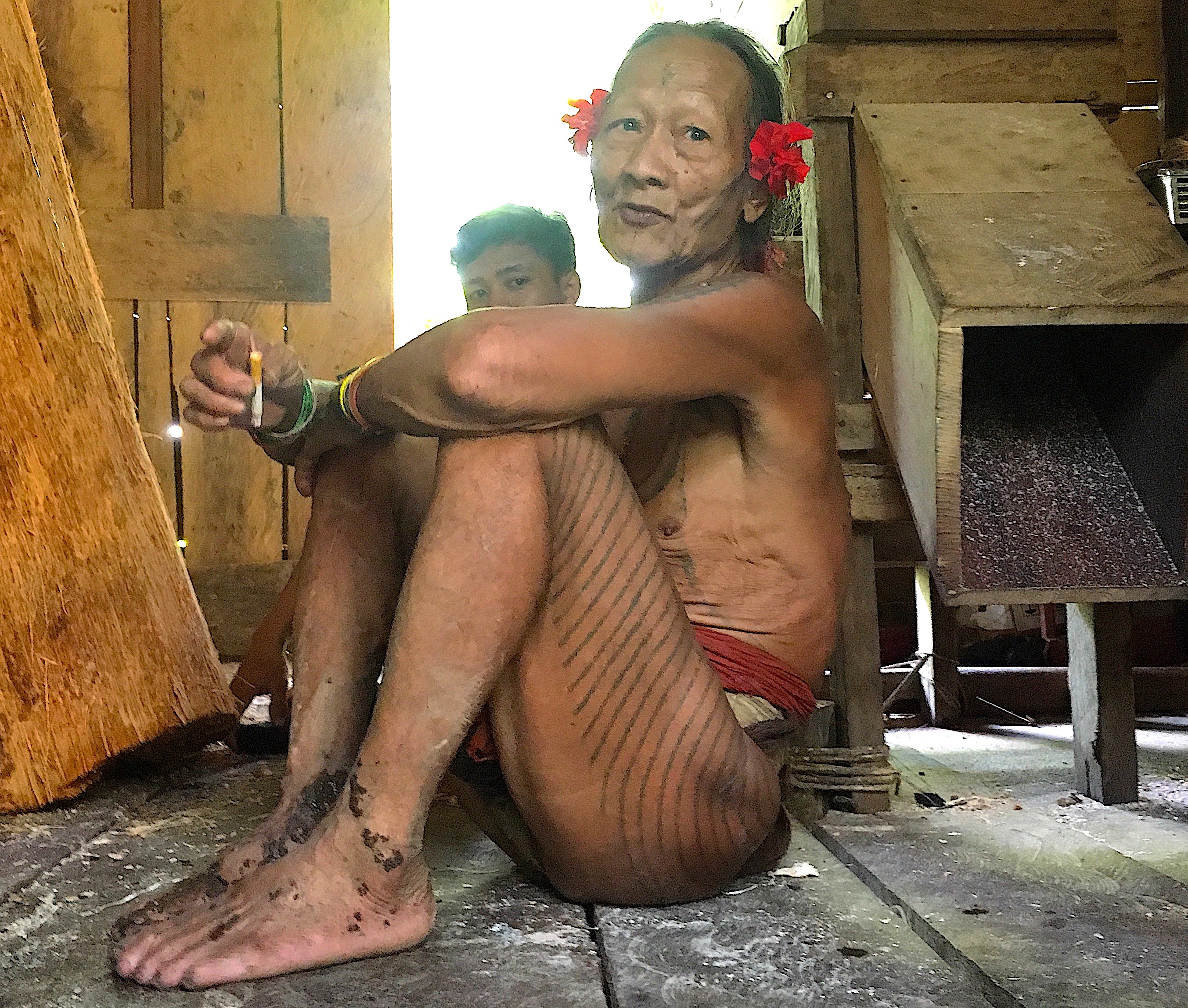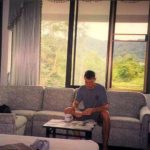I met Toikot on Siberut, the largest island in the Mentawai Archipelago, off the western coast of Sumatra. Toikot is 78 years old. Like most Mentawai men his hair has remained jet-black into old age, and his lean, ropy muscles would put even Iggy Pop to shame. His full-body tattoos mark him as a shaman, and the hibiscus flowers in his hair are a signature Mentawai beauty ritual. I met him at a makeshift sago mill a half-day’s walk from the Baderaeket River in the Siberut rainforest.
The Mentawai Islands have long enjoyed the anonymity of isolation, and they don’t feature much in colonial-era expedition reports, high-profile anthropological studies, or classic travel books. Historically they have been culturally and politically cut off from the Sumatran mainland by 100 miles of dangerous crosswinds and tricky currents. Indigenous Mentawaian languages bear little similarity to mainland languages, and the endemic biodiversity here is unique from Sumatra in a similar sense that Madagascar’s fauna differs from that of Africa.
About 7000 tourists visit the Mentawai Islands each year, the majority of them surfers seeking pristine breaks on the western shoreline. I went there to visit tribal settlements in the rain-forested interior of Siberut.
Weirdly enough, I first heard about the Mentawai Islands from a Canadian backpacker I met in a youth hotel in Salzburg, Austria 20 years ago. He had trekked into the jungles of Siberut, lived with a hunter-gatherer tribe for a couple weeks, and come back sporting a palm-hammered bamboo-needle charcoal-paste tattoo on one shoulder. Mentawaian men, he said, were covered in such tattoos, and wore bark-fiber loincloths. The tribal people there lived in longhouses; they survived on wild fruit, sago powder, pork, and monkey meat; they had their own animistic religion, and made village decisions communally.
All of which is largely accurate (and makes for great travel tales), though it would be a mistake to think the Mentawaian people live in a cultural vacuum. The first missionaries to visit Siberut 100 years ago were murdered, but later Protestant and Catholic missions found nominal converts in the 1960s and 1970s. Surfers and Hippie Trail backpackers arrived not long after, and by the 1980s and 1990s Mentawaian trekking guides were offering multi-night jungle tours (which eventually found mention in Lonely Planet’s Indonesia guidebook).
I traveled to Siberut Island less as an adventurer than a person curious to know what the place might be like, 20 years after I first learned of its existence.
Photos and stories from the Mentawai Islands to come soon.
Note: “Dispatches” are short vignettes, profiles, and mini-essays written and posted from the road, often in tandem with my Instagram account. For more full-formed writing, check out my book Marco Polo Didn’t Go There, or the Essays or Stories archives on this site. I don’t host a “comments” section, but I’m happy to hear your thoughts via my Contact page.





